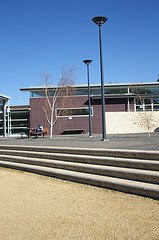
The Creative Commons licenses enable copyright holders to grant some or all of their rights to the public while retaining others through a variety of licensing and contract schemes including dedication to the public domain or open content licensing terms. The intention is to avoid the problems current copyright laws create for the sharing of information.The project provides several free licenses that copyright owners can use when releasing their works on the Web.
Peter wrote flickrCC so he could easily find photos on flickr that were released under the creative commons license.They are free.
Steps for obtaining photo's for website
- Open flickrCC in a browser
- Deselect for editing
- Search for a keyword
- Choose image on left panel
- Select small size for image
- Right click image and copy to images directory
- Set up "img src" tag with name of image
- Copy attribution with link to original photo
- Paste attribution
Creative License use
- No editing and no commercial use
- Editing but no commercial use
- Editing and commercial use
- No editing and no commercial use
FTP
One of the most commonly seen questions when dealing with firewalls and other Internet connectivity issues is the difference between active and passive FTP and what the difference is.
Active:
In active mode FTP, the client connects from a random port to the FTP server's command port, port 21. Then, the client starts listening and sends the FTP command to the FTP server. The server will then connect back to the client's specified data port from its local data port, which is port 20. From the server-side firewall's standpoint, to support active mode FTP, communication channels need to be opened. The main problem with active mode FTP falls on the client side. The FTP client doesn't make the actual connection to the data port of the server, it simply tells the server what port it is listening on and the server connects back to the specified port on the client. From the client side firewall this appears to be an outside system initiating a connection to an internal client--something that is usually blocked.
Passive:
In order to resolve the issue of the server initiating the connection to the client a different method for FTP connections was developed. This was known as passive mode, or PASV, after the command used by the client to tell the server it is in passive mode. In passive mode FTP the client initiates both connections to the server, solving the problem of firewalls filtering the incoming data port connection to the client from the server. While passive mode FTP solves many of the problems from the client side, it opens up a whole range of problems on the server side. The biggest issue is the need to allow any remote connection to high numbered ports on the server.
Since administrators running FTP servers will need to make their servers accessible to the greatest number of clients, they will almost certainly need to support passive FTP. The exposure of high level ports on the server can be minimized by specifying a limited port range for the FTP server to use.
Image: 'Trans-Dimensional Portal Ahead' www.flickr.com/photos/99796131@N00/8730356









